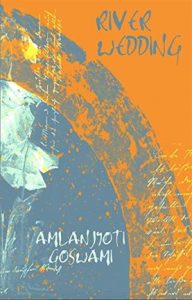SERPENTS UNDER MY VEIL
By Asiya Zahoor
Tethys, An imprint of Yatra Books, 2019, pp. 70, Rs.299.00
COUNTRY DRIVE
By Sukrita/Yasmin Ladha
Red River, 2018, pp. 129, Rs.300.00
RITUALS
By Kiriti Sengupta
Hawakal, 2019, pp. 99, Rs.300.00
MAKING A POEM
By Vihang A. Naik
Authors Press, 2018 (Second Edition), pp. 49, Rs.250.00
TRIPS AND TRIALS
By Jayshree Misra Tripathi
Pepperscript, 2018, pp.112, Rs.290.00
FRAGRANT WORDS
By Rajni Sekhri Sibal
Bloomsbury Prime, 2019, pp. 83, Rs.399.00
 In 1912, the rhetoric by Ezra Pound was considered as a predecessor for what was to become the future of poetry: ‘Poetry is not a sort of embroidery, cross-stitch, crochet, for pensioners, nor yet a postprandial soporific for the bourgeoisie. We need the old feud between the artist and the smugger portions of the community revived with some virulence for the welfare of things at large.’ For Pound, a poet’s duty was to contribute to the techniques of writings that would help advance the art. In the light of this view, here are a few books of poetry that seem to deviate from the usual trajectories and have set forth on a path that requires the reader to see the world around them in a new light.
In 1912, the rhetoric by Ezra Pound was considered as a predecessor for what was to become the future of poetry: ‘Poetry is not a sort of embroidery, cross-stitch, crochet, for pensioners, nor yet a postprandial soporific for the bourgeoisie. We need the old feud between the artist and the smugger portions of the community revived with some virulence for the welfare of things at large.’ For Pound, a poet’s duty was to contribute to the techniques of writings that would help advance the art. In the light of this view, here are a few books of poetry that seem to deviate from the usual trajectories and have set forth on a path that requires the reader to see the world around them in a new light.

